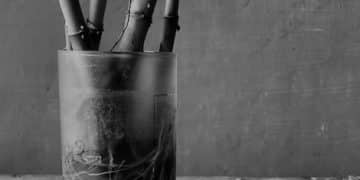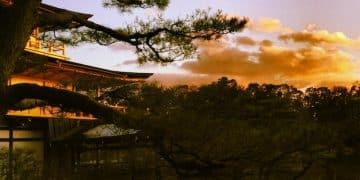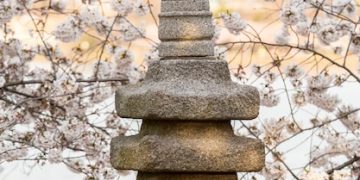Exploring Japanese Folklore: Unraveling Yokai Myths
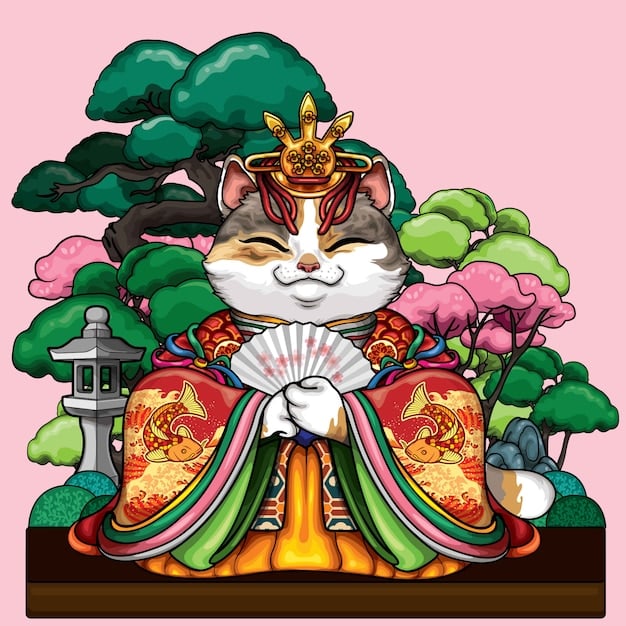
Explore the captivating world of Japanese folklore, where ancient myths and legends intertwine with daily life, revealing the diverse and intriguing nature of its supernatural beings, the Yokai, deeply embedded in the cultural tapestry.
Step into a realm where the ordinary meets the extraordinary, a vibrant landscape filled with ancient tales and mystical creatures. Exploring the World of Japanese Folklore: Unraveling the Myths and Legends of Yokai invites you on a journey through the rich tapestry of Japan’s supernatural heritage, where spirits and monsters known as Yokai hold a fascinating place in cultural consciousness.
The Genesis of Yokai: Deep Roots in Japanese Culture
The concept of Yokai is deeply embedded within the fabric of Japanese culture, stretching back centuries. These supernatural entities are more than just monsters or ghosts; they represent a spectrum of phenomena, from the inexplicable to the personification of natural elements and human emotions. Their origins are as diverse as the creatures themselves, often stemming from animistic beliefs, Buddhist teachings, Shinto practices, and even simple superstitions. Understanding the genesis of Yokai requires a look into the historical and spiritual contexts that nurtured their myths.
Early Japanese society held a profound reverence for nature, believing spirits inhabited almost every aspect of the natural world—from trees and rivers to mountains and rocks. This animistic worldview laid the groundwork for many nature-bound Yokai. As Buddhism and Shinto traditions evolved, they incorporated and sometimes redefined these entities, sometimes as benevolent protectors, other times as malevolent forces requiring appeasement. The Edo period (1603-1868) saw a surge in Yokai popularity, fueled by artists and writers who meticulously cataloged and illustrated them, transforming oral traditions into vivid visual representations that continue to influence popular culture today.
Animism and Early Belief Systems
Before the extensive documentation of Yokai, common people lived by an animistic understanding of the world. Every unusual sound, unexplained illness, or sudden natural phenomenon could be attributed to a sentient entity. This pre-modern perspective fostered a healthy respect, and sometimes fear, of the unseen, leading to the creation of countless local legends.
- Ancient shamans and spiritual leaders communicated with these unseen forces.
- Natural disasters were often interpreted as the wrath of powerful spirits.
- Rituals were performed to appease or repel malevolent beings from agricultural fields or homes.
The fluidity of these early beliefs allowed for a gradual integration of new ideas introduced by foreign religions, particularly Buddhism. While distinctly Japanese, the concept of Yokai can be seen as an ongoing narrative, constantly evolving and adapting to reflect societal changes and anxieties. This continuous evolution is why Yokai remain relevant, mirroring contemporary fears and fascinations, a testament to their enduring appeal and the human need to make sense of the unknown.
Categorizing the Supernatural: Diverse Forms of Yokai
Categorizing Yokai is a monumental task, given their immense variety and the often fluid definitions. However, broad classifications help in understanding their common characteristics and roles within Japanese folklore. These categories often reflect where the Yokai are encountered, their origins, or their primary behaviors. From mischievous animals to transformed objects and human-like demons, the spectrum of Yokai is truly astounding.
One primary distinction can be made between those Yokai that are animalistic, object-based, or human-like. Animal Yokai, like the cunning Kitsune (foxes) or the shapeshifting Tanuki (raccoon dogs), often possess magical abilities and can trick or even bless humans. Object Yokai, known as Tsukumogami, are household items that gain a spirit after 100 years of existence, typically becoming playful but sometimes vengeful. Human-like or demonic Yokai, such as the formidable Oni or the alluring Yuki-Onna, often embody human fears or desires, acting as moral allegories or cautionary tales.
Zoological Yokai: Tricksters and Protectors
Many of Japan’s most well-known Yokai take animal forms, embodying the natural world’s power and mystery. These creatures often blur the lines between wild animals and supernatural beings, demonstrating intelligence, the ability to shapeshift, and often a keen understanding of human nature.
- Kitsune (Foxes): Renowned for their intelligence and magical abilities, Kitsune can shapeshift into human form, often appearing as beautiful women. They can be benevolent messengers of the god Inari or mischievous tricksters.
- Tanuki (Raccoon Dogs): Portrayed as jovial and naive, Tanuki are master illusionists. They are often depicted with large scrotums, symbolizing prosperity, and are known for their love of sake and their drum-like belly sounds.
- Kappa (River Imp): Amphibious Humanoids with a water-filled dish on their head, Kappa inhabit rivers and lakes. While sometimes helpful, they are notorious for pulling people into the water and challenging them to sumo wrestling.
Understanding these categories enriches our appreciation of Yokai. They are not merely fantastical creatures but integral components of a complex belief system. Each type carries specific connotations and lessons, deeply woven into the moral and social fabric of traditional Japanese life. Their continued popularity attests to their timeless appeal and their ability to resonate with new generations, reflecting persistent human concerns about the known and unknown.
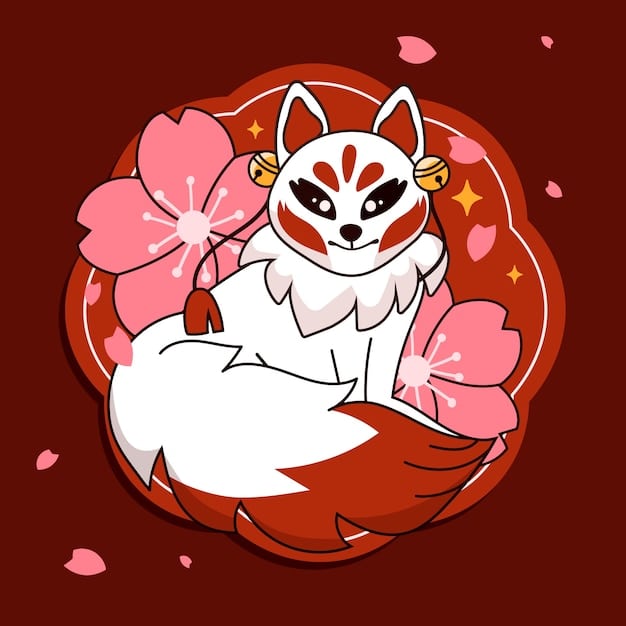
Iconic Yokai: Stories That Endure
The world of Japanese folklore is populated by countless Yokai, each with its unique story and characteristics. Among them, several have achieved iconic status, appearing frequently in art, literature, and modern media. These popular Yokai often embody profound cultural meanings, serving as cautionary tales, figures of aspiration, or simply reflections of everyday fears and wonders. Their enduring appeal lies not just in their supernatural powers but in their deeply human-like qualities and the moral lessons they often impart.
For example, the Oni, a fearsome ogre or demon, typically represents malevolent forces, often depicted with red or blue skin, sharp claws, and a club. Despite their terrifying appearance, they can sometimes be benevolent or even depicted comically, highlighting the duality in Japanese spiritual thought. The Yuki-Onna, or “snow woman,” is a beautiful but deadly spirit of winter, luring travelers to their demise in snowstorms. Her tales are often imbued with tragic romance, showcasing the ethereal beauty and dangerous allure of nature.
A Compendium of Famous Yokai
Numerous Yokai hold a special place in the hearts and minds of the Japanese, their legends passed down through generations. These famous examples encapsulate the diversity and richness of Japan’s supernatural pantheon, inspiring awe, fear, and sometimes even affection.
- Tengu (Heavenly Dog): Often depicted with red faces and long noses, or as winged humanoids, Tengu are skilled martial artists and protectors of mountains and forests. They can be vain or prideful but also serve as wise guides or punishers of the arrogant.
- Nopperabo (Faceless Ghost): A terrifying Yokai that appears as a normal person but, when questioned, reveals a completely blank face. This creature primarily aims to startle and does not typically inflict harm, playing on the fear of the uncanny.
- Rokurokubi (Long-Necked Woman): Appearing as ordinary women by day, Rokurokubi secretly have necks that can stretch to incredible lengths at night. They often use their ability to scare people or observe without being noticed.
- Oboroguruma (Creepy Cart): A chilling Yokai that manifests as an ox-cart, often appearing on misty nights. It is said to carry a monstrous face, which peers out from within the cart, invoking a sense of dread and mystery.
These iconic Yokai, among many others, are not static figures; their stories have been retold and reinterpreted countless times, adapting to different eras and mediums. They continue to captivate, offering insights into historical anxieties, cultural values, and the timeless human fascination with the bizarre and the supernatural.
Yokai in Daily Life: From Cautionary Tales to Cultural Icons
Yokai are not confined to ancient scrolls or dusty folktales; their presence permeates many aspects of contemporary Japanese daily life. From traditional festivals and local superstitions to the ubiquitous presence in modern media, Yokai continue to function as cultural touchstones, shaping traditions, influencing artistic expression, and providing a unique lens through which to understand Japanese society. Their stories often carry deeper meanings, serving as cautionary tales that reinforce social norms, or providing explanations for natural phenomena and societal quirks too complex to be otherwise understood.
In many rural communities, beliefs in certain Yokai persist, influencing local festivals and practices designed to appease or ward off these spirits. For example, specific talismans or rituals might be used to protect crops from mischievous spirits or to ensure safe passage through dangerous areas. These practices highlight the enduring connection between folklore and the practical concerns of everyday life. Furthermore, Yokai have seamlessly transitioned into popular culture, appearing in manga, anime, video games, and even modern art. This pervasive representation introduces these ancient beings to new generations, ensuring their continued relevance and evolution.
Yokai in Modern Media and Festivals
The adaptability of Yokai makes them perfect subjects for modern storytelling. They are reimagined and recontextualized, maintaining their core essence while reflecting contemporary narratives and anxieties. Their portrayal in media helps keep their legends alive and introduces them to a global audience.
- Anime and Manga: Series like “GeGeGe no Kitaro” have popularized Yokai for decades, making them recognizable to children and adults alike. Modern series often explore the nuances of human-Yokai interactions, providing comedic, dramatic, or philosophical narratives.
- Video Games: Franchises such as “Yokai Watch” have introduced countless Yokai to a younger demographic, transforming them into collectible, friendly companions, significantly altering perceptions from purely fearsome entities.
- Popular Art and Fashion: Yokai motifs often appear in contemporary Japanese art, fashion, and even merchandise, reflecting a cultural pride in these unique mythological figures.
Moreover, traditional festivals like the “Hyakki Yagyō” (Night Parade of One Hundred Demons) continue to be celebrated in various forms, often involving people dressed as Yokai parading through the streets. These events are not just historical reenactments but vibrant manifestations of a living cultural heritage. They serve as a reminder that the line between the mundane and the supernatural is often blurred in Japanese consciousness, enhancing community bonds and preserving ancient traditions for future generations to cherish and explore.
The Cultural Significance and Evolution of Yokai
The cultural significance of Yokai extends far beyond simple ghost stories; they embody a dynamic narrative that reflects Japan’s historical, social, and spiritual evolution. These supernatural beings serve as metaphorical mirrors, revealing human fears, hopes, and societal anxieties across different eras. Their enduring presence in popular consciousness speaks to their adaptability and their ability to resonate with universal themes, providing a unique lens through which to understand the Japanese psyche and its intricate relationship with the unseen world.
Historically, Yokai served as explanations for the unknown, providing comprehensible narratives for natural disasters, inexplicable illnesses, or strange occurrences. In a world without scientific explanations, these entities embodied the mysteries of existence. During the Edo period, with advances in printing and literacy, Yokai transitioned from purely oral traditions to visual and textual forms, becoming subjects for artists like Toriyama Sekien, whose illustrated bestiaries formalized many Yokai types and popularized their images across the archipelago. This period was crucial in shaping the collective consciousness of Yokai. The rise of urbanization also saw the emergence of new Yokai, reflecting anxieties of crowded cities and social changes.
Yokai as Cultural Barometers
The evolution of Yokai demonstrates how folklore acts as a barometer for societal change. As Japan modernized, so did its supernatural creatures, moving from rural deities to urban legends, reflecting new technological fears and social anxieties.
- Environmental Concerns: Some modern Yokai emerge from environmental anxieties, such as pollution-related transformations or spirits of neglected urban spaces.
- Technological Fears: With the advent of technology, some Yokai stories have adapted to incorporate elements of modern life, like spirits inhabiting electronic devices.
- Social Commentary: Certain Yokai represent societal outcasts or marginalized groups, offering subtle critiques or reflections on social stratification and human empathy.
The continuous adaptation and interpretation of Yokai, particularly in contemporary arts and media, ensure their survival and relevance. They are not merely relics of the past but living elements of culture that continue to influence how Japanese people perceive their world. Their ability to fuse ancient traditions with modern contexts ensures that Exploring the World of Japanese Folklore: Unraveling the Myths and Legends of Yokai remains a vibrant and evolving field of study, captivating both scholars and enthusiasts globally.
Preserving and Rediscovering Yokai Lore
Preserving the rich tapestry of Yokai lore is a dynamic process that involves academic scholarship, artistic reimagination, and community engagement. As Japan moves further into the 21st century, the efforts to document, understand, and celebrate these supernatural entities intensify, ensuring that future generations can continue to learn from and be captivated by their stories. This preservation goes beyond mere collection; it involves rediscovering the deeper meanings embedded within these tales and making them accessible to a wider audience, contributing to a global appreciation of Japanese cultural heritage.
Academics, folklorists, and historians play a crucial role in systematizing the study of Yokai, analyzing ancient texts, local legends, and historical records to piece together a comprehensive understanding of their origins and evolution. Institutions like the International Research Center for Japanese Studies (Nichibunken) have dedicated research units to Yokai, compiling vast databases and publishing scholarly works that shed new light on these enigmatic beings. Their meticulous research helps distinguish between genuine folklore and later artistic interpretations, providing a robust foundation for further exploration.
Modern Initiatives and Public Engagement
Beyond academic study, a vibrant ecosystem of artists, writers, and cultural practitioners actively contributes to the preservation and rediscovery of Yokai lore. This includes digital archives, museum exhibitions, and community projects that bring Yokai stories to life.
- Digital Archiving: Online databases and digital museums make vast collections of Yokai images and texts accessible worldwide, fostering global interest and detailed research.
- Exhibitions and Museums: Specialized museums and temporary exhibitions often showcase Yokai art, historical documents, and interactive displays, educating the public about their significance.
- Folklore Tourism: Many regions in Japan leverage their local Yokai legends to promote tourism, creating themed parks, events, and merchandise that celebrate their unique supernatural heritage.
These initiatives ensure that Yokai are not just subjects of academic pursuit but living traditions that continue to inspire and entertain. By bridging the gap between historical scholarship and contemporary engagement, the preservation efforts allow for a continuous dialogue between the past and the present, securing the place of Yokai in the future cultural landscape. The ongoing fascination with Exploring the World of Japanese Folklore: Unraveling the Myths and Legends of Yokai underscores a universal human desire to understand the mystical and the unknown.
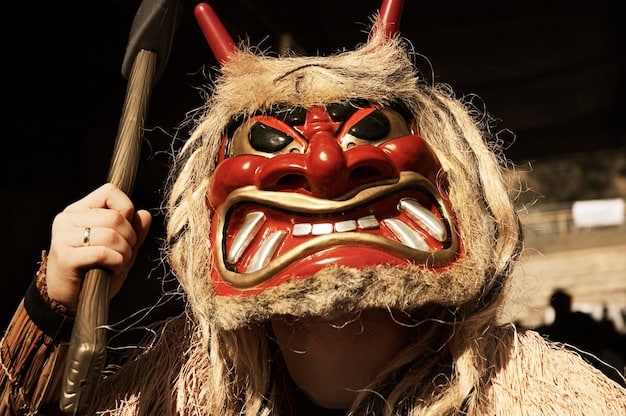
Yokai as a Mirror to Human Nature and Society
Beyond their monstrous or mischievous exteriors, Yokai often serve as profound reflections of human nature, societal norms, and the philosophical underpinnings of Japanese culture. Their stories are not merely fantastical tales but allegories that explore moral dilemmas, psychological states, and the delicate balance between humanity and the natural world. By examining the roles and behaviors of various Yokai, one can gain deeper insights into historical Japanese values, fears, and the societal expectations that shaped daily life.
Many Yokai embody human vices or virtues. For instance, the greedy, deceptive actions of some Yokai can be seen as warnings against dishonesty and avarice, while the benevolent acts of others might encourage kindness and respect for traditions. The fear of being haunted by a vengeful spirit often reflects anxieties about unresolved conflicts or past injustices, emphasizing the importance of harmony and proper conduct. Yokai associated with boundaries—like crossroads, bridges, or the thresholds of homes—symbolize transitional states and the dangers of the unknown, prompting caution and adherence to customary practices.
Psychological and Social Dimensions of Yokai
The collective portrayal of Yokai offers a unique window into the human psyche and societal concerns, revealing layers of meaning that extend beyond simple entertainment or superstition.
- Fear of the Unknown: Yokai explain the unexplainable, from strange noises in the night to inexplicable illnesses, providing a framework for processing natural and supernatural phenomena.
- Moral Lessons: Many Yokai tales serve as moral fables, teaching children about respect, kindness, and the consequences of misbehavior or disrespect for traditions.
- Social Control: Some Yokai stories functioned to maintain social order, warning against activities like trespassing, excessive drinking, or neglecting filial duties.
The ongoing fascination with Yokai highlights a universal human need to confront the liminal, the things that exist just beyond our clear understanding. They offer a rich landscape for philosophical consideration, engaging with questions of identity, the essence of good and evil, and humanity’s place in the broader cosmos. As such, to deeply engage with Exploring the World of Japanese Folklore: Unraveling the Myths and Legends of Yokai is to embark on a journey that reveals as much about humanity as it does about the supernatural.
| Key Aspect | Brief Description |
|---|---|
| 👻 Yokai Diversity | From mischievous animals to terrifying demons, Yokai encapsulate a vast spectrum of supernatural entities in Japanese folklore, reflecting diverse origins and roles. |
| 📜 Cultural Roots | Evolved from animism, Shinto, and Buddhism, Yokai are deeply embedded in Japan’s historical and spiritual landscape, explaining the unexplainable. |
| 🎭 Modern Relevance | Yokai continue to thrive in popular media (anime, games) and festivals, adapting to contemporary contexts while preserving ancient traditions. |
| 🔍 Human Reflection | Beyond monsters, Yokai often mirror human nature, societal fears, and moral lessons, offering profound insights into Japanese values. |
Frequently Asked Questions About Yokai
Yokai are supernatural entities, spirits, and monsters from Japanese folklore. They encompass a vast range of beings, from benevolent and mischievous to terrifying and malevolent, often embodying natural phenomena, human emotions, or transformations of objects and animals. Each Yokai has unique characteristics and stories, reflecting the rich imaginative landscape of Japan.
The origins of Yokai are deeply rooted in Japan’s animistic beliefs, Shinto religion, and Buddhist mythology. Many began as oral traditions, explanations for unexplained phenomena, or personifications of nature. The Edo period saw extensive artistic and literary documentation of Yokai, solidifying their presence in popular culture and imagination.
No, Yokai are not uniformly evil. Their nature varies greatly. While some, like the Oni, are indeed terrifying and dangerous, many are mischievous tricksters (e.g., Kitsune, Tanuki), and some can even be benevolent or protective spirits. Their roles often depend on the specific legend and the context in which they appear.
In modern Japan, Yokai remain highly relevant, extensively featured in popular media such as anime, manga, and video games. They appear in traditional festivals, art, and even tourism. Contemporary interpretations often recontextualize them for new generations, ensuring their lore continues to evolve and fascinate, reflecting modern anxieties and cultural values.
A Tsukumogami is a type of Yokai that manifests from old inanimate objects, particularly those that have reached 100 years of age. It is believed that such objects accrue a spirit over time, coming to life and developing their own personalities. They range from mischievous, like a haunted umbrella, to harmlessly quirky, embodying discarded household items.
Conclusion
The exploration of Japanese folklore, particularly the world of Yokai, reveals a vibrant and complex cultural landscape, far richer than mere tales of ghosts and goblins. These mythological beings are not simply figures of fear or fascination; they are integral parts of Japan’s historical narrative, spiritual beliefs, and aesthetic expressions. From ancient animistic roots to their dynamic presence in contemporary media, Yokai continue to offer profound insights into human nature, societal values, and the enduring quest to understand the mystical elements of existence. Their stories, ever-evolving, assure their place as timeless symbols of Japan’s profound and often enigmatic heritage.
